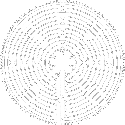Dissociation and Dissociative Identity Disorder

By Frank J. Schwoeri PhD
Dissociative Identity Disorder (DID), formerly called Multiple Personality Disorder, is a psychological reaction to early trauma and abuse. Persons with DID often experience the symptoms of PTSD such as flashbacks, nightmares, anxiety, and enhanced startle reflex, but also have dissociative symptoms such as losing time and feeling emotionally numb. The hallmark of DID is the presence of parts of the personality (“alters”, “parts”, “subpersonalities”, all mean basically the same thing) which take over behavior, are often in conflict with each other, and may be dramatically different than the everyday, “going on with life” part of the personality. These alters develop in childhood in response to trauma, and are dissociated parts of the self that hold the memories, emotions, and ways of relating that are associated with specific traumatic experiences with abusive others.
The most common , and often the first, symptom which persons with DID notice, is all kinds of memory problems, especially losing time, in which the person realizes that some significant period of time has passed, and they have no memory of what happened or what they were doing. Usually this means that another part was “out” and was “running the show” for that period of time that is missing from continuous memory. As a result, the person often finds evidence of things they’ve done but have no memory of doing at all- finding clothes, often out of their usual style and character that they don’t remember buying, or having friends talk about something the person did that they don’t remember doing.
While the symptoms of DID may be dramatic, persons with DID are NOT “crazy”, psychotic, or schizophrenic. Dissociation and DID are a self-protective, even life-saving, reaction to traumas which actually happened in childhood. DID used to be considered rare, in part because of the society’s denial of the extent of child abuse throughout the culture. We now know that childhood trauma is common (look up the ACE Study on adverse childhood experiences for surprising data on this), and that DID is far from rare. Young children are normally dissociative (The “imaginary friend being a common example of this), and young children do not have a continuous experience of a unitary self across different situations and feeling states. But when trauma makes it unbearable to know what they know and feel what they feel, the dissociative capacity persists into adulthood, as a self-protective mechanism. As a result, parts of the self which hold these scary experiences remain walled off by an amnesic barrier from the awareness of other parts of the self. This enables the child (and later the adult) to go on with everyday life, and to remain attached to the abusive adult on whom they also depend.
We now know that DID is a remarkably creative coping mechanism which our minds create to deal with repetitive, cumulative early trauma; but at the same time, it can also be quite disruptive to one’s life as an adult, when triggers/reminders of past traumas elicit the appearance of alters who don’t know that the trauma is in the distant past. These dissociated parts of the self then react with self-protective actions, appropriate to the past situations but not to the present, which cause further problems in everyday life.
The treatment for DID is intensive long-term psychotherapy, according to the guidelines for treating DID published by the International Society for the Study of Trauma and Dissociation (ISSTD, J. Trauma and Dissociation, 2014). Persons with DID are often not correctly diagnosed until they have been seen by several different clinicians who diagnose and treat only the surface symptoms such as anxiety or depression. Many persons with DID will say they have had inner voices and puzzling experiences as long as they can remember, but never spoke about them because they thought everyone had these experiences and symptoms.
Once the diagnosis is established, the first phase of therapy is establishing safety and stability, often first addressing the partially successful but maladaptive coping strategies the person may have adopted to deal with disruptive symptoms- such as drinking to deal with anxiety, or self-cutting to deal with feeling numb. Psychoeducation about trauma and dissociation is also an important part of early treatment; understanding how the dissociation came about, and how trauma affects the body, can help the person feel more in control.
Once safety and relative stability are established, therapy for DID then becomes a matter of helping the person become acquainted with their dissociative parts, and the parts enter the therapeutic space as allies who tell their stories. The goal is for the whole person to feel safe knowing what they know, and feeling what they feel. The defensive psychological structure of separate parts gradually become one integrated personality, and dissociated experiences become conscious memories, rather than disruptive vivid replays of past wounds.



